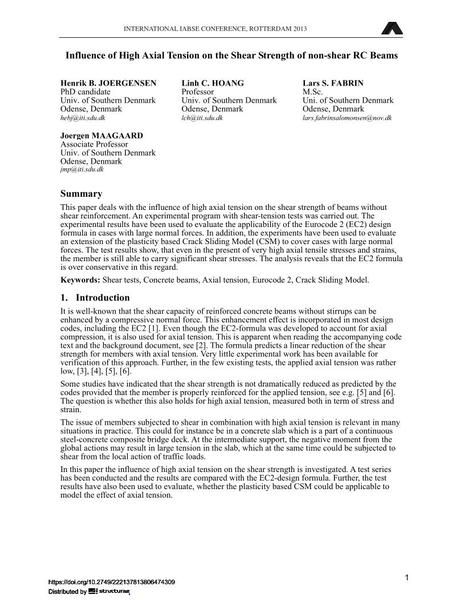Influence of High Axial Tension on the Shear Strength of non-shear RC Beams

|
|
|||||||||||
Bibliographic Details
| Author(s): |
Henrik B. Joergensen
Linh C. Hoang Lars S. Fabrin Joergen Maagaard |
||||
|---|---|---|---|---|---|
| Medium: | conference paper | ||||
| Language(s): | English | ||||
| Conference: | IABSE Conference: Assessment, Upgrading and Refurbishment of Infrastructures, Rotterdam, The Netherlands, 6-8 May 2013 | ||||
| Published in: | IABSE Conference, Rotterdam, May 2013 | ||||
|
|||||
| Page(s): | 86-87 | ||||
| Total no. of pages: | 7 | ||||
| Year: | 2013 | ||||
| DOI: | 10.2749/222137813806474309 | ||||
| Abstract: |
This paper deals with the influence of high axial tension on the shear strength of beams without shear reinforcement. An experimental program with shear-tension tests was carried out. The experimental results have been used to evaluate the applicability of the Eurocode 2 (EC2) design formula in cases with large normal forces. In addition, the experiments have been used to evaluate an extension of the plasticity based Crack Sliding Model (CSM) to cover cases with large normal forces. The test results show, that even in the present of very high axial tensile stresses and strains, the member is still able to carry significant shear stresses. The analysis reveals that the EC2 formula is over conservative in this regard. |
||||
| Keywords: |
axial tension shear tests Eurocode 2 concrete beams Crack Sliding Model
|
||||
